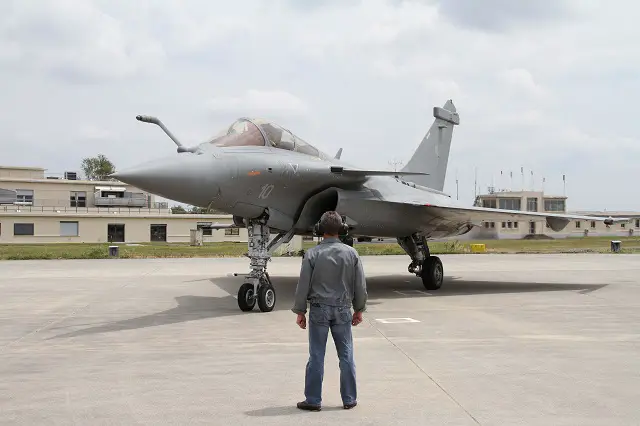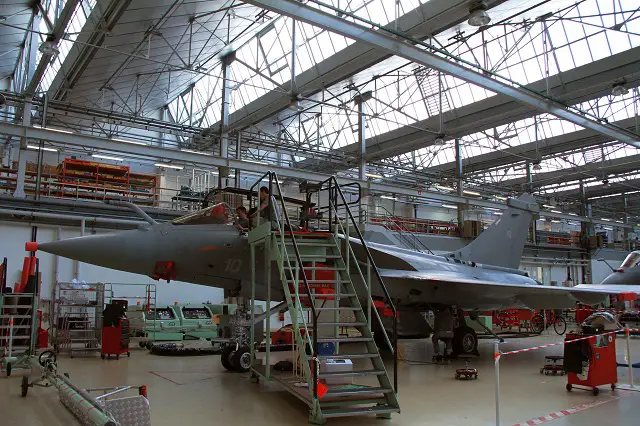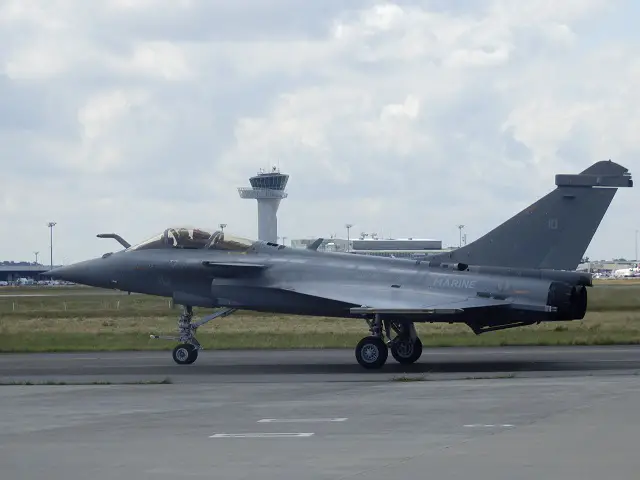Breaking news
The French procurement agency takes delivery of its 1st retrofitted Rafale M from Dassault Aviation.
| 2014
 The Rafale M10 is the first of a tranche of ten retrofitted Rafale “Marine” aircraft for the French Navy Picture: DGA |
|||
The
transition from the F1 standard to the F3 standard involves the following
changes: » New modular electronic computers, » New cockpit screens, » Changes to the aircraft’s electrical wiring, » Upgrading of the Spectra countermeasures system, » Changes to the RBE2 PESA radar (interchangeable with the new AESA antenna), » Changes to the weapon store stations. The delivery of the retrofitted Rafale Marine aircraft will be staggered over a period up to 2017. The F3 standard provides the Navy and Air Force Rafale with complete versatility to carry out the following missions: » Interception and air-to-air combat with 30mm gun and Mica IR/EM missiles (+ Meteor missiles from 2018 onwards). » Ground support with 30mm gun, GBU-12/24 laser-guided bombs and Hammer precision-guided bombs. » In depth strikes with Scalp cruise missiles. » Sea strikes with the Exocet AM39 Block 2 missile and other air-to-surface weapons. » Real-time strategic and tactical reconnaissance with the Areos pod. » In-flight refueling from one Rafale to another (“buddy-buddy”). » Nuclear deterrence with the ASMP-A missile. |
|||
 The Rafale M10 during the retrofit process Picture: DGA |
|||
f the 180
Rafale aircraft ordered by France to date, 133 have been delivered. As
an optimization and a rationalization factor of the French forces, the
Rafale was designed to gradually replace seven types of previous-generation
combat aircraft. According to the White Paper on Defense and National
Security (2013), there will be eventually 225 combat aircraft in the French
Navy and French Air Force, compared with almost 700 in the 90s. The Rafale fleet has now flown a total of 120,000 flight hours, 16,000 of which during operations. Since mid-2013, series-production Rafale have been provided with the Thales RBE2 AESA active-antenna radar. Since its service entry, the Rafale has been used in all theatres of operations: Afghanistan, Libya, Mali, Central Africa and Iraq. |
|||




























